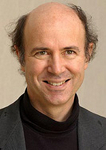Frank Wilczek

Hubert M. James Lecture Series
October 24, 2012Professor Frank Wilczek is considered one of the world's most eminent theoretical physicists. He is known, among other things, for the discovery of asymptotic freedom, the development of quantum chromodynamics, the invention of axions, and the discovery and exploitation of new forms of quantum statistics (anyons). When only 21 years old and a graduate student at Princeton University, in work with David Gross he defined the properties of color gluons, which hold atomic nuclei together.
Professor Wilczek has been a Sloan Foundation Fellow (1975-77) and a MacArthur Foundation Fellow (1982-87). He has received UNESCO's Dirac Medal, the American Physical Society's Sakurai Prize, the Michelson Prize from Case Western University, and the Lorentz Medal of the Netherlands Academy for his contributions to the development of theoretical physics. In 2004 he received the Nobel Prize in Physics, and in 2005 the King Faisal Prize. He is a member of the National Academy of Sciences, the Netherlands Academy of Sciences, and the American Academy of Arts and Sciences, and is a Trustee of the University of Chicago.
He contributes regularly to Physics Today and to Nature, explaining topics at the frontiers of physics to wider scientific audiences. He received the Lilienfeld Prize of the American Physical Society for these activities. Two of his pieces have been anthologized in Best American Science Writing (2003, 2005). Together with his wife Betsy Devine, he wrote a beautiful book, Longing for the Harmonies (W.W. Norton) an exposition of modern physics which was named a NYTimes Notable Book of the Year. Frank is also the author of Fantastic Realities, a "playful yet profound" collection of his short pieces on wide-ranging topics, which concludes with a family's-eye view of the Nobel adventures, drawn from Betsy's blog. Frank's latest book, The Lightness of Being, is a lively, playful, and inventive tour de force as well as a colorful and masterful treatment of recent developments in fundamental physics.
"Quantum Beauty"
Abstract:
Does the world embody beautiful concepts? Mystics and philosophers long imagined that it should, and scientists gathered hints that it does, but it is really only in the twentieth century, with the development of quantum theory, that the answer emerged as a triumphant "Yes!" I'll narrate the rich intellectual history of this question, including many striking images. Then I'll discuss how looking for beauty suggests new ideas in physics today.
- Events and Seminars
- Astrophysics Seminars
- Biophysical Seminars
- Condensed Matter Seminars
- Nuclear Physics Seminars
- Physics Education Research Seminars
- Events and Seminars Archives
- General Colloquia
- Hubert M. James Lectures
- Particle Physics
- Candidate Seminars
- Atomic, Molecular, Optical Seminars
- Quantum Informational Science
- Nuclear Physics Seminar